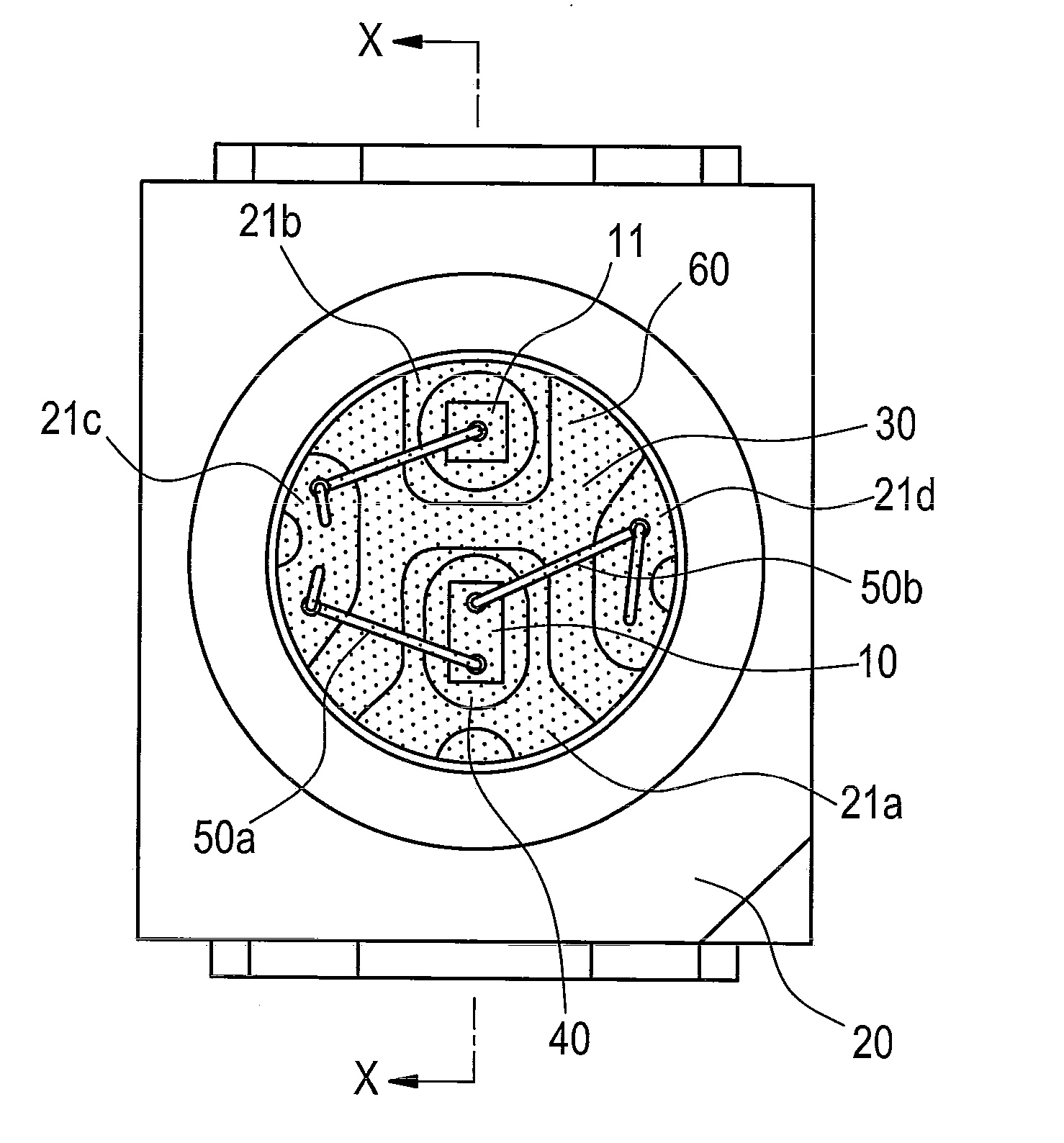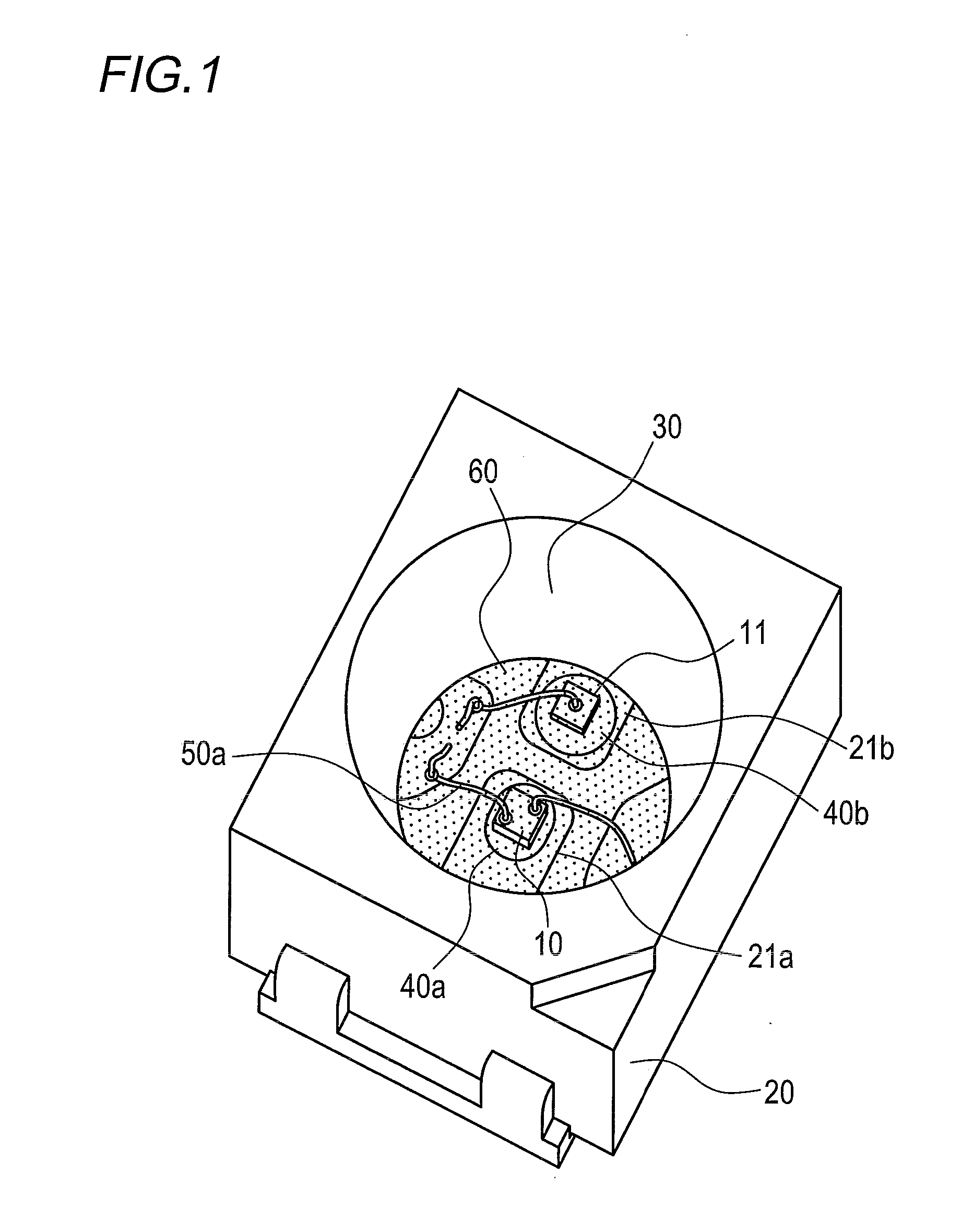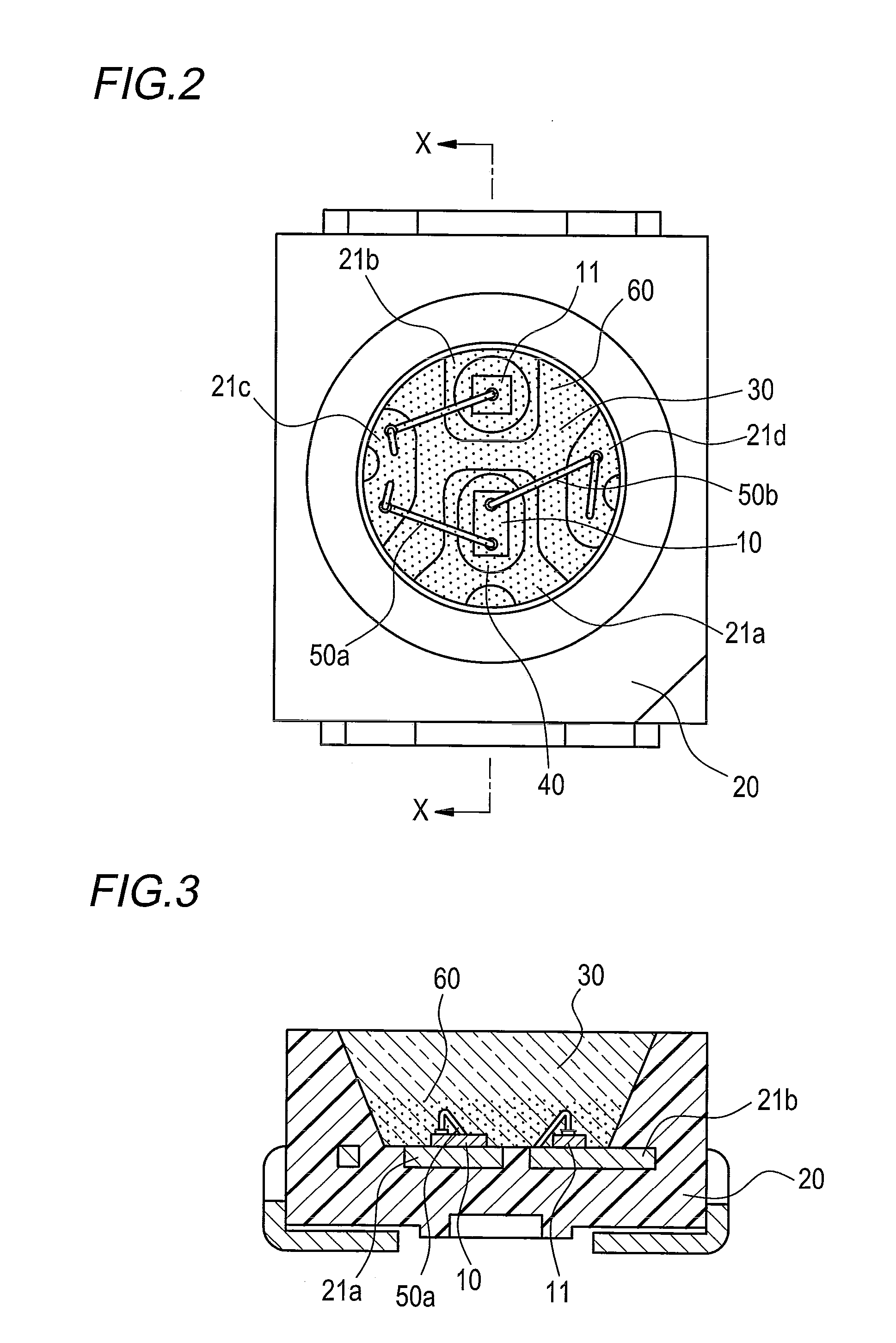Optical semiconductor device encapsulated with silicone resin
a technology of silicone resin and semiconductor device, which is applied in the direction of semiconductor device, solid-state device, basic electric element, etc., can solve the problems of corrosive gases within the environment penetrating through the encapsulating material, the loss of thermal shock resistance, and the hardness of the resin produ
- Summary
- Abstract
- Description
- Claims
- Application Information
AI Technical Summary
Benefits of technology
Problems solved by technology
Method used
Image
Examples
synthesis example 1
Synthesis of Component (A-1)
[0054]A mixture containing 148.1 g (70 mol %) of phenyltrichlorosilane and 36.15 g (30 mol %) of dimethylvinylchlorosilane was added dropwise over a period of one hour to a stirred mixed solvent medium containing 250 g of water and 100 g of toluene that had been heated to 80° C. Following completion of the dropwise addition, the mixture was refluxed for 2 hours, yielding a toluene solution of a cohydrolysis condensation product. This solution was left to settle and cool to room temperature, and following removal of the water layer, the toluene layer was washed repeatedly with water until the wastewater became neutral. To the thus obtained organopolysiloxane toluene solution (organic layer 1) was added an amount of KOH equivalent to a 20-fold excess relative to the chlorine content, and the resulting mixture was refluxed for two hours. Following the reaction, the reaction mixture was neutralized with trimethylchlorosilane, and was then washed repeatedly wi...
synthesis example 2
Synthesis of Component (A-1)
[0055]A mixture containing 116.3 g (55 mol %) of phenyltriehlorosilane, 19.35 g (15 mol %) of dimethyldichlorosilane and 42.3 g (30 mol %) of methylvinyldichlorosilane was added dropwise over a period of one hour to a stirred mixed solvent medium containing 250 g of water and 100 g of toluene that had been heated to 80° C. Following completion of the dropwise addition, the mixture was refluxed for 2 hours, yielding a toluene solution of a cohydrolysis condensation product. This solution was left to settle and cool to room temperature, and following removal of the water layer, the toluene layer was washed repeatedly with water until the wastewater became neutral. To the thus obtained organopolysiloxane toluene solution (organic layer 1) was added an amount of KOH equivalent to a 20-fold excess relative to the chlorine content, and the resulting mixture was refluxed for two hours. Following the reaction, the reaction mixture was neutralized with trimethylch...
synthesis example 3
Synthesis of Adhesion Aid
[0056]A reaction vessel was charged with 67.7 g of 3-glycidoxypropyl-methyldimethoxysilane (KBM-402, manufactured by Shin-Etsu Chemical Co., Ltd.), 370 g of dimethoxydimethylsilane, 20 g of vinylmethyldimethoxysilane and 3,000 ml of isopropyl alcohol, 25 g of a 25% aqueous solution of tetramethylammonium hydroxide and 270 g of water were added, and the resulting mixture was stirred for 3 hours at room temperature. Following completion of the reaction, 1,000 ml of toluene was added to the reaction system, and the mixture was neutralized using an aqueous solution of sodium dihydrogen phosphate. Using a separating funnel, the residue was washed with hot water. The toluene was then removed under reduced pressure, yielding the target adhesion aid.
PUM
| Property | Measurement | Unit |
|---|---|---|
| viscosity | aaaaa | aaaaa |
| diameter | aaaaa | aaaaa |
| adhesion | aaaaa | aaaaa |
Abstract
Description
Claims
Application Information
 Login to View More
Login to View More - R&D
- Intellectual Property
- Life Sciences
- Materials
- Tech Scout
- Unparalleled Data Quality
- Higher Quality Content
- 60% Fewer Hallucinations
Browse by: Latest US Patents, China's latest patents, Technical Efficacy Thesaurus, Application Domain, Technology Topic, Popular Technical Reports.
© 2025 PatSnap. All rights reserved.Legal|Privacy policy|Modern Slavery Act Transparency Statement|Sitemap|About US| Contact US: help@patsnap.com



